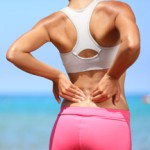Recovery tips: Total Knee Replacement Getting a new metallic knee and a big surgery can be very overwhelming. It is particularly hard right after the surgery! Here you will find some Recovery Tips: Total Knee Replacement. These can help with faster recovery. Exercise- During the first few days following the surgery, you are at risk of developing a clot in your calf. This is because as you are not moving much due to pain or from the effect of anesthesia. Simple foot/ankle exercises will prevent pooling of blood around your calf leading to a possible clot. Registered Physiotherapists Mississauga can help to manage your pain and swelling right after the surgery. Other Recovery tips: Total Knee Replacement Many surgeons recommend providing compression to the area using a compression stocking. They also recommend using ice around your knee joint. Its usually done with your leg elevated so that gravity can further…
Read More


